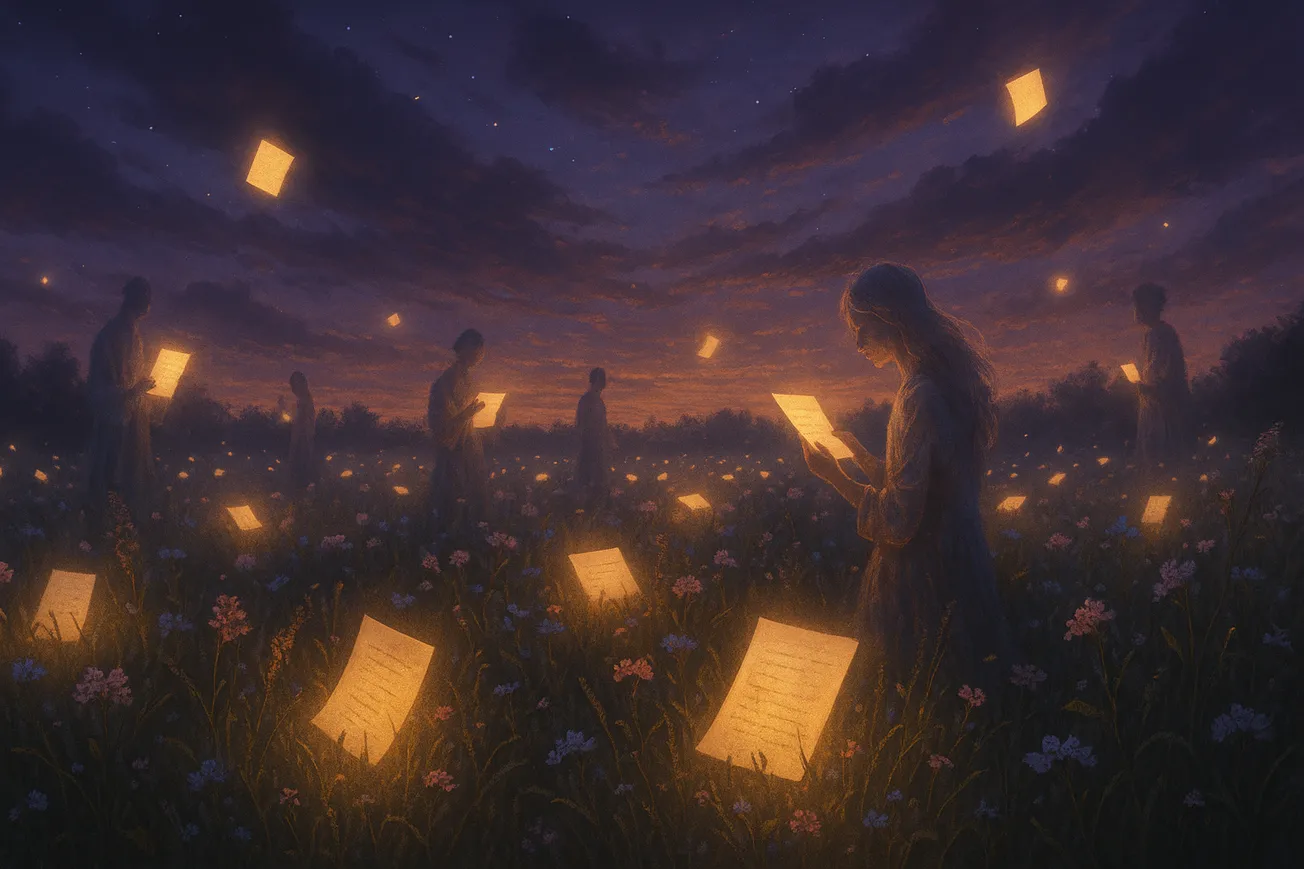🌈 The Fractal Story Engine | Death & Beyond (Afterlife) | (18) DB-002-S
The letter arrives sealed in barkskin, tied with thread spun from crow feathers and midnight. No one sees it delivered. It waits in the cradle, beside the infant’s heart. The child will not open it until they are ready, though some never do.
It is not a letter in the usual sense. There is no address, no return stamp, no language shared among nations. Yet every letter bears the name of its receiver, etched in a script that only they can read.
Mothers learn not to fear it. Fathers do not speak of it. The midwives smile with the weight of long memory. This is the custom. This is the covenant.
Some children open their letter on the first day they taste grief. Others on the day they fall in love. A few open it during childhood, holding it in shaking fingers while the sun folds itself into twilight. Most wait decades, until the ache of unanswered questions grows louder than the rhythm of their plans.
Yue opened hers in her thirtieth year, on the morning her hands refused to paint. Her colors had abandoned her. Ochres turned flat, indigos trembled, and every canvas came out gray. She walked out past the city edge to the river that never forgot, and there, under the leaning willow, she untied the thread.
Inside: no date, no warning, no prophecy.
Only this:
“You are the only part of me that has ever wanted to live.”
She read it once. Then again. And again. She laughed. She cried. She pressed the letter to her lips as though it might taste like truth.
And something in her changed.
She began painting again, but never with brushes. She used bones, stones, branches fallen in storms. Her work was not beautiful in the usual way. But people came. They wept before her walls. Some brought their unopened letters and left with them unsealed.
In the northern village of Nohr, a boy named Dain opened his letter after his sister drowned beneath the spring ice. He had not spoken for twelve days. When he did, it was to say, “She is not gone. She is in the ink.”
His letter had said:
“My presence will always feel like absence. But I was there at your first breath.”
He folded it neatly and placed it beneath her pillow. Afterward, he became a letter-writer himself, not of death, but of forgiveness. He mailed letters no one asked for, and still the people read them and changed.
In every land, stories grew. Some burned their letters. Some sang them. One woman carved hers into stone so the ocean could read it. A child in the hills fed his to a fox, and the fox carried it into the dream of a sleeping elder who woke laughing.
The letters did not promise escape. They did not bargain. They did not threaten.
They remembered.
They remembered what it meant to touch this world and to tremble with the weight of light.
Once, a man asked his priest why the letters existed at all.
“Why would Death speak to us?” he asked. “Why remind us we are borrowed?”
The priest answered, “Because Death is not the thief. Death is the archivist.”
Then the man opened his letter, and it simply said:
“I have kept every version of you. Even the ones you abandoned.”
He sat for a long time after that. Then he wrote a letter of his own, not to Death, but to the boy he had once been, and sent it upstream.
In time, the letters faded. Their ink ran. Their fibers grew thin. But none were truly lost.
Somewhere between thunder and dream, a field is blooming with them.
They rustle when the wind turns tender.
They hum when the living draw breath.
And sometimes, when no one is looking, they write back.

